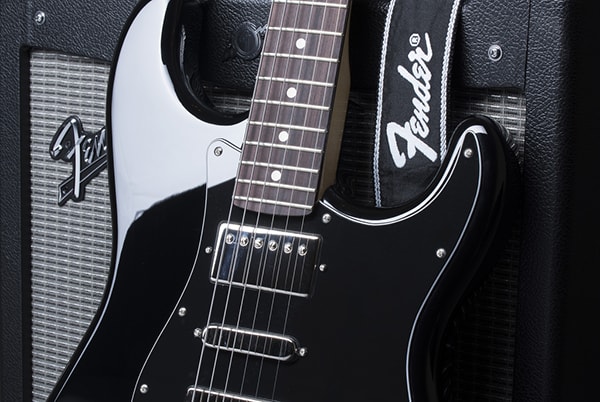Part 1: Amplitude and Volume
Playing and listening to music raises all sorts of fascinating questions about how sound works: How can six cellos match the volume of 20 violins? Why is it that when a band is playing at the far end of the park, all I can hear are the bass and drums? Why does a trumpet sound so much different from a saxophone? Questions like these open the door to the wondrous science of acoustics.

Musicians Do the Wave! How Sound Travels from an Instrument to Your Ears
When the surface of a lake, river, or ocean is disturbed—by wind, by the pull of the tides, or just by someone skipping a stone—waves form and travel across the water. Similarly, when air is disturbed by a vibration, a wave travels through the air. Of course, we can’t see the wave because we can’t see air, but when the wave reaches our eardrums, we hear it as sound.
There are two main ways that instruments create sound waves. For wind instruments, air is forced into a column or pipe, causing the air to vibrate as it moves through the instrument. For many other instruments, including guitar, violin, and piano, it is the vibration of a plucked, bowed, or struck string that disturbs the surrounding air and sets a sound wave into motion.
What is amazing is that with these two simple ideas—forcing air into a column and disturbing the air by vibrating a string—an entire symphony of musical sounds can be created!
How Sound Gets Loud: Amplitude

Anyone who has ever watched a snowboarding or skateboarding competition has heard the announcers use the word “amplitude” to describe how “big” each competitor’s tricks are. The announcers are actually using a proper scientific term: amplitude is the mathematical measurement of the size of a wave. For water waves, greater amplitude means a rougher ride for boats and a bigger splash when waves reach the shore. For sound waves, greater amplitude means a louder sound.
Naturally, instruments with bigger strings or larger air columns tend to produce waves of greater amplitude than smaller instruments. That explains why it is easier to produce very loud notes on a cello than on a violin. Acoustics can get complicated, though—the size of an instrument does not always indicate the amplitude of the sound waves it creates. A fife (the small, flute-like instrument often used in military bands) is significantly louder than a French horn because its air column is specifically designed to create very intense disturbances of the air.
What do musicians do if their instruments are not naturally loud enough to be heard throughout a room? They send the sound through an amplifier, which—you guessed it—is a device that increases the amplitude of a wave!
There Is More to a Wave than Just How Big It Is
Amplitude of sound waves is what separates a window-rattling boom from a gentle whisper, but of course there is much more to a sound than just how loud it is. When you watch waves rolling onto a beach, you see more than just how high the waves are. You might also notice how rapidly each crash of a wave follows the last one, or how far apart each wave crest is from the next one. These questions relate to frequency and wavelength, and those are the characteristics of a wave that separate a violin from a string bass, a trumpet from a French horn.
The Science of Art and the Art of Science
We tend to think of art and science as separate from each other, even opposites of each other. Thanks to the mysteries of acoustics, music is both an art and a science. No wonder students who study music do better than non-musicians in math and science classes! Read more about How Music Helps Kids Excel in School.



